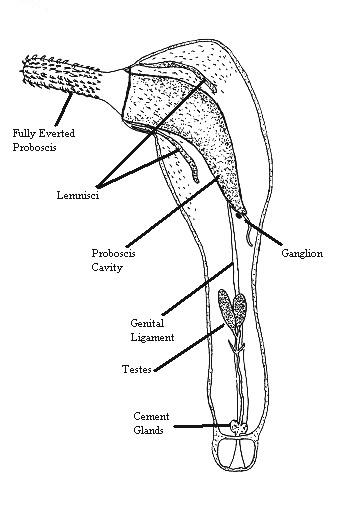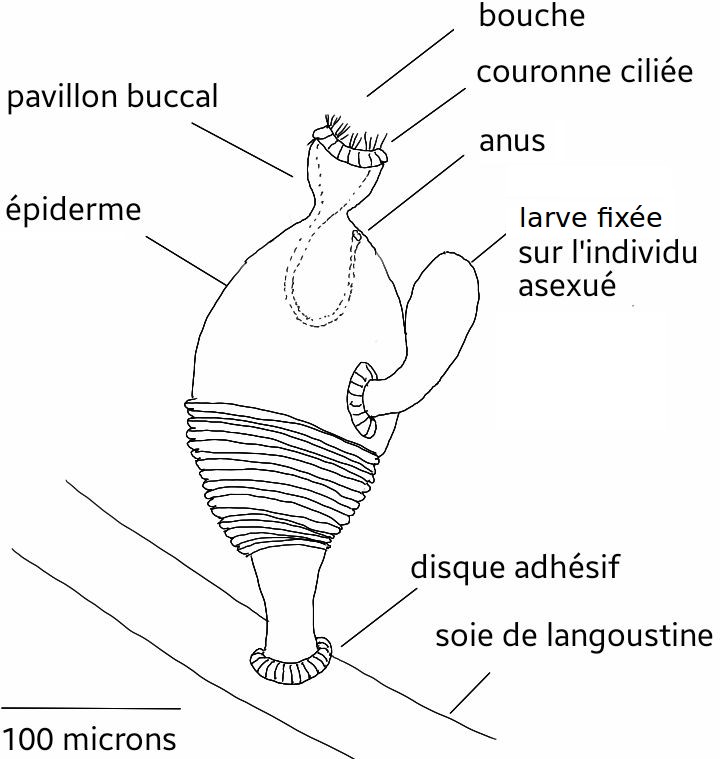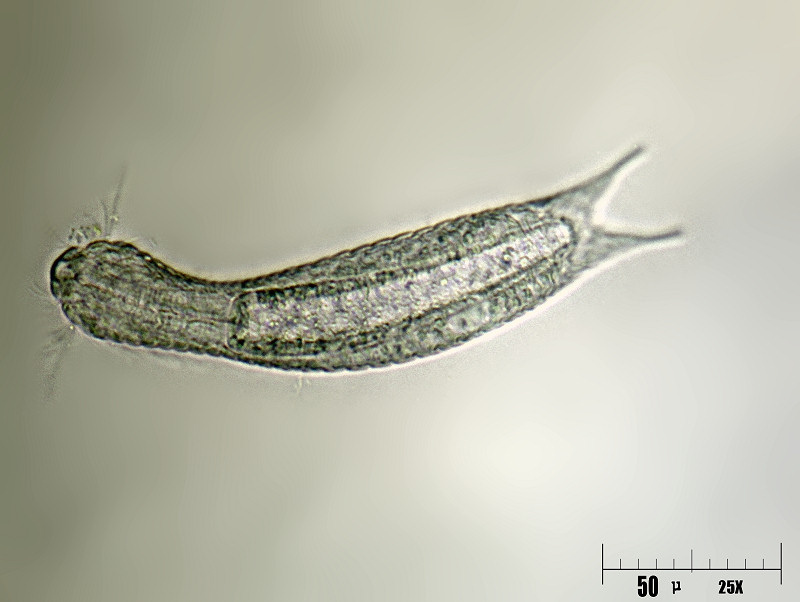|
Aschelminthes
The Aschelminthes (also known as Aeschelminthes, Nemathelminthes, Nematodes), closely associated with the Platyhelminthes, are an obsolete phylum of pseudocoelomate and other similar animals that are no longer considered closely related and have been promoted to phyla in their own right. The term Aschelminth is now generally only used as an informal name for any member of the approximately ten different invertebrate phyla formerly included within Aschelminthes. It is a polyphyletic group. Subdivisions Although invertebrate experts do not necessarily agree on these categorizations, groups that are generally incorporated into Aschelminthes include: * Acanthocephala * Chaetognatha * Cycliophora * Gastrotricha * Kinorhyncha * Loricifera * Nematoda * Nematomorpha * Priapulida * Rotifera In addition, Entoprocta and Tardigrada Tardigrades (), known colloquially as water bears or moss piglets, are a phylum of eight-legged segmented micro-animals. They were first described by the G ... [...More Info...] [...Related Items...] OR: [Wikipedia] [Google] [Baidu] |
Loricifera
Loricifera (from Latin, '' lorica'', corselet (armour) + ''ferre'', to bear) is a phylum of very small to microscopic marine cycloneuralian sediment-dwelling animals that had been determined to be 37 described species, in 9 genera, but in 2021 has increased to 43 species. Aside from these described species, there are approximately 100 more that have been collected and not yet described. Their sizes range from 100 μm to ca. 1 mm. They are characterised by a protective outer case called a lorica and their habitat is in the spaces between marine gravel to which they attach themselves. The phylum was discovered in 1983 by R.M. Kristensen, near Roscoff, France. They are among the most recently discovered groups of animals. They attach themselves quite firmly to the substrate, and hence remained undiscovered for so long. The first specimen was collected in the 1970s, and later described in 1983. They are found at all depths, in different sediment type ... [...More Info...] [...Related Items...] OR: [Wikipedia] [Google] [Baidu] |
Nematode
The nematodes ( or grc-gre, Νηματώδη; la, Nematoda) or roundworms constitute the phylum Nematoda (also called Nemathelminthes), with plant- parasitic nematodes also known as eelworms. They are a diverse animal phylum inhabiting a broad range of environments. Less formally, they are categorized as Helminths, but are taxonomically classified along with arthropods, tardigrades and other moulting animals in the clade Ecdysozoa, and unlike flatworms, have tubular digestive systems with openings at both ends. Like tardigrades, they have a reduced number of Hox genes, but their sister phylum Nematomorpha has kept the ancestral protostome Hox genotype, which shows that the reduction has occurred within the nematode phylum. Nematode species can be difficult to distinguish from one another. Consequently, estimates of the number of nematode species described to date vary by author and may change rapidly over time. A 2013 survey of animal biodiversity published in the mega ... [...More Info...] [...Related Items...] OR: [Wikipedia] [Google] [Baidu] |
Rotifer
The rotifers (, from the Latin , "wheel", and , "bearing"), commonly called wheel animals or wheel animalcules, make up a phylum (Rotifera ) of microscopic and near-microscopic pseudocoelomate animals. They were first described by Rev. John Harris in 1696, and other forms were described by Antonie van Leeuwenhoek in 1703. Most rotifers are around long (although their size can range from to over ), and are common in freshwater environments throughout the world with a few saltwater species. Some rotifers are free swimming and truly planktonic, others move by inchworming along a substrate, and some are sessile, living inside tubes or gelatinous holdfasts that are attached to a substrate. About 25 species are colonial (e.g., ''Sinantherina semibullata''), either sessile or planktonic. Rotifers are an important part of the freshwater zooplankton, being a major foodsource and with many species also contributing to the decomposition of soil organic matter. Most species of the r ... [...More Info...] [...Related Items...] OR: [Wikipedia] [Google] [Baidu] |
Platyhelminthes
The flatworms, flat worms, Platyhelminthes, or platyhelminths (from the Greek πλατύ, ''platy'', meaning "flat" and ἕλμινς (root: ἑλμινθ-), ''helminth-'', meaning "worm") are a phylum of relatively simple bilaterian, unsegmented, soft-bodied invertebrates. Unlike other bilaterians, they are acoelomates (having no body cavity), and have no specialized circulatory and respiratory organs, which restricts them to having flattened shapes that allow oxygen and nutrients to pass through their bodies by diffusion. The digestive cavity has only one opening for both ingestion (intake of nutrients) and egestion (removal of undigested wastes); as a result, the food cannot be processed continuously. In traditional medicinal texts, Platyhelminthes are divided into Turbellaria, which are mostly non-parasitic animals such as planarians, and three entirely parasitic groups: Cestoda, Trematoda and Monogenea; however, since the turbellarians have since been proven not to be monop ... [...More Info...] [...Related Items...] OR: [Wikipedia] [Google] [Baidu] |
Pseudocoelomate
The coelom (or celom) is the main body cavity in most animals and is positioned inside the body to surround and contain the digestive tract and other organs. In some animals, it is lined with mesothelium. In other animals, such as molluscs, it remains undifferentiated. In the past, and for practical purposes, coelom characteristics have been used to classify bilaterian animal phyla into informal groups. Etymology The term ''coelom'' derives from the Ancient Greek word (), meaning 'cavity'. Structure Development The coelom is the mesodermally lined cavity between the gut and the outer body wall. During the development of the embryo, coelom formation begins in the gastrulation stage. The developing digestive tube of an embryo forms as a blind pouch called the archenteron. In Protostomes, the coelom forms by a process known as schizocoely. The archenteron initially forms, and the mesoderm splits into two layers: the first attaches to the body wall or ectoderm, forming t ... [...More Info...] [...Related Items...] OR: [Wikipedia] [Google] [Baidu] |
Invertebrate
Invertebrates are a paraphyletic group of animals that neither possess nor develop a vertebral column (commonly known as a ''backbone'' or ''spine''), derived from the notochord. This is a grouping including all animals apart from the chordate subphylum Vertebrata. Familiar examples of invertebrates include arthropods, mollusks, annelids, echinoderms and cnidarians. The majority of animal species are invertebrates; one estimate puts the figure at 97%. Many invertebrate taxa have a greater number and variety of species than the entire subphylum of Vertebrata. Invertebrates vary widely in size, from 50 μm (0.002 in) rotifers to the 9–10 m (30–33 ft) colossal squid. Some so-called invertebrates, such as the Tunicata and Cephalochordata, are more closely related to vertebrates than to other invertebrates. This makes the invertebrates paraphyletic, so the term has little meaning in taxonomy. Etymology The word "invertebrate" comes from the Latin word ''vertebra' ... [...More Info...] [...Related Items...] OR: [Wikipedia] [Google] [Baidu] |
Acanthocephala
Acanthocephala (Greek , ', thorn + , ', head) is a phylum of parasitic worms known as acanthocephalans, thorny-headed worms, or spiny-headed worms, characterized by the presence of an eversible proboscis, armed with spines, which it uses to pierce and hold the gut wall of its host. Acanthocephalans have complex life cycles, involving at least two hosts, which may include invertebrates, fish, amphibians, birds, and mammals. About 1420 species have been described. The Acanthocephala were thought to be a discrete phylum. Recent genome analysis has shown that they are descended from, and should be considered as, highly modified rotifers. This unified taxon is known as Syndermata. History The earliest recognisable description of Acanthocephala – a worm with a proboscis armed with hooks – was made by Italian author Francesco Redi (1684).Crompton 1985, p. 27 In 1771, Joseph Koelreuter proposed the name Acanthocephala. Philipp Ludwig Statius Müller independently called ... [...More Info...] [...Related Items...] OR: [Wikipedia] [Google] [Baidu] |
Chaetognatha
The Chaetognatha or chaetognaths (meaning ''bristle-jaws'') are a phylum of predatory marine worms that are a major component of plankton worldwide. Commonly known as arrow worms, about 20% of the known Chaetognatha species are benthic, and can attach to algae and rocks. They are found in all marine waters, from surface tropical waters and shallow tide pools to the deep sea and polar regions. Most chaetognaths are transparent and are torpedo shaped, but some deep-sea species are orange. They range in size from . There are more than 120 modern species assigned to over 20 genera. Despite the limited diversity of species, the number of individuals is large. Arrow worms are usually considered a type of protostome that do not belong to either Ecdysozoa or Lophotrochozoa. Anatomy Chaetognaths are transparent or translucent dart-shaped animals covered by a cuticle. The body is divided into a distinct head, trunk, and tail. There are between four and fourteen hooked, grasping spin ... [...More Info...] [...Related Items...] OR: [Wikipedia] [Google] [Baidu] |
Cycliophora
''Symbion'' is a genus of commensal aquatic animals, less than 0.5 mm wide, found living attached to the mouthparts of cold-water lobsters. They have sac-like bodies, and three distinctly different forms in different parts of their two-stage life-cycle. They appear so different from other animals that they were assigned their own, new phylum Cycliophora shortly after they were discovered in 1995. This was the first new phylum of multicelled organism to be discovered since the Loricifera in 1983. Taxonomy ''Symbion'' was discovered in 1995 by Reinhardt Kristensen and Peter Funch on the mouthparts of the Norway lobster (''Nephrops norvegicus''). Other, related, species have since been discovered on: * the American lobster (''Homarus americanus'', host to ''Symbion americanus'') * the European lobster (''Homarus gammarus'', host to an as yet unnamed species of ''Symbion'') The genus is so named because of its commensal relationship with the lobster (a form of symbiosi ... [...More Info...] [...Related Items...] OR: [Wikipedia] [Google] [Baidu] |
Gastrotrich
The gastrotrichs (phylum Gastrotricha), commonly referred to as hairybellies or hairybacks, are a group of microscopic (0.06-3.0 mm), worm-like, acoelomate animals, and are widely distributed and abundant in freshwater and marine environments. They are mostly benthic and live within the periphyton, the layer of tiny organisms and detritus that is found on the seabed and the beds of other water bodies. The majority live on and between particles of sediment or on other submerged surfaces, but a few species are terrestrial and live on land in the film of water surrounding grains of soil. Gastrotrichs are divided into two orders, the Macrodasyida which are marine (except for two species), and the Chaetonotida, some of which are marine and some freshwater. Nearly 800 species of gastrotrich have been described. Gastrotrichs have a simple body plan with a head region, with a brain and sensory organs, and a trunk with a simple gut and the reproductive organs. They have adhes ... [...More Info...] [...Related Items...] OR: [Wikipedia] [Google] [Baidu] |
Kinorhyncha
Kinorhyncha ( grc, κινέω, kīnéō, I move, ' "snout") is a phylum of small marine invertebrates that are widespread in mud or sand at all depths as part of the meiobenthos. They are also called mud dragons. Modern species are or less, but Cambrian forms could reach . Anatomy Kinorhynchs are limbless animals, with a body consisting of a head, neck, and a trunk of eleven segments. They are the only members of Ecdysozoa, except from the panarthropoda, with a segmented body. Juveniles have eight or nine segments, depending on genus, with the last two or three being added later during growth. Like other ecdysozoans they do not have external cilia, but instead have a number of spines along the body, plus up to seven circles of spines around the head. These spines are used for locomotion, withdrawing the head and pushing forward, then gripping the substrate with the spines while drawing up the body. The body wall consists of a thin syncitial layer, which secretes a tough ... [...More Info...] [...Related Items...] OR: [Wikipedia] [Google] [Baidu] |
Nematomorpha
Nematomorpha (sometimes called Gordiacea, and commonly known as horsehair worms, hairsnakes, or Gordian worms) are a phylum of parasitoid animals superficially similar to nematode worms in morphology, hence the name. Most species range in size from long, reaching 2 metres in extreme cases, and in diameter. Horsehair worms can be discovered in damp areas, such as watering troughs, swimming pools, streams, puddles, and cisterns. The adult worms are free-living, but the larvae are parasitic on arthropods, such as beetles, cockroaches, mantises, orthopterans, and crustaceans. About 351 freshwater species are known and a conservative estimate suggests that there may be about 2000 freshwater species worldwide. The name "Gordian" stems from the legendary Gordian knot. This relates to the fact that nematomorphs often coil themselves in tight balls that resemble knots. Description and biology Nematomorphs possess an external cuticle without cilia. Internally, they have only lon ... [...More Info...] [...Related Items...] OR: [Wikipedia] [Google] [Baidu] |









